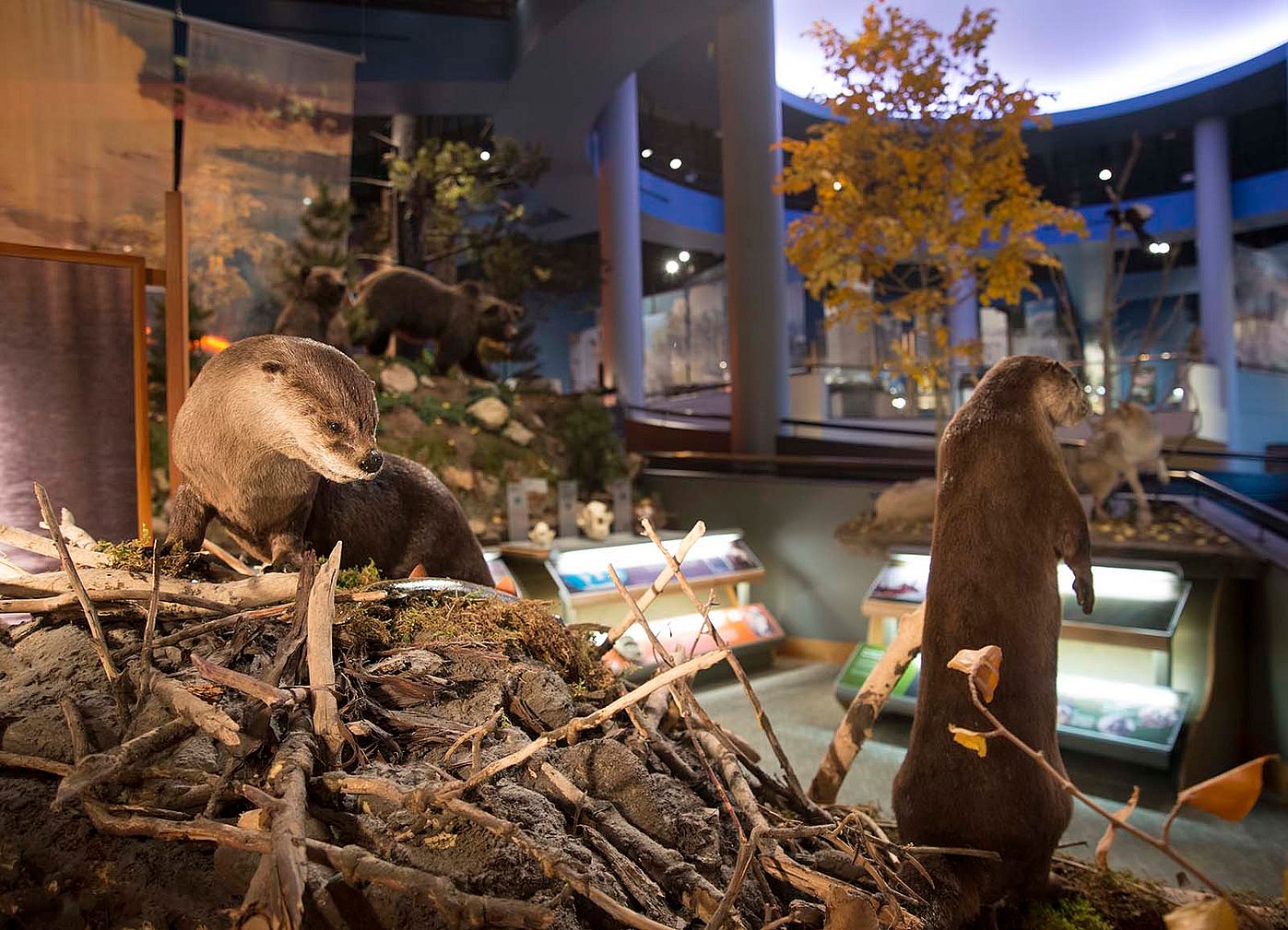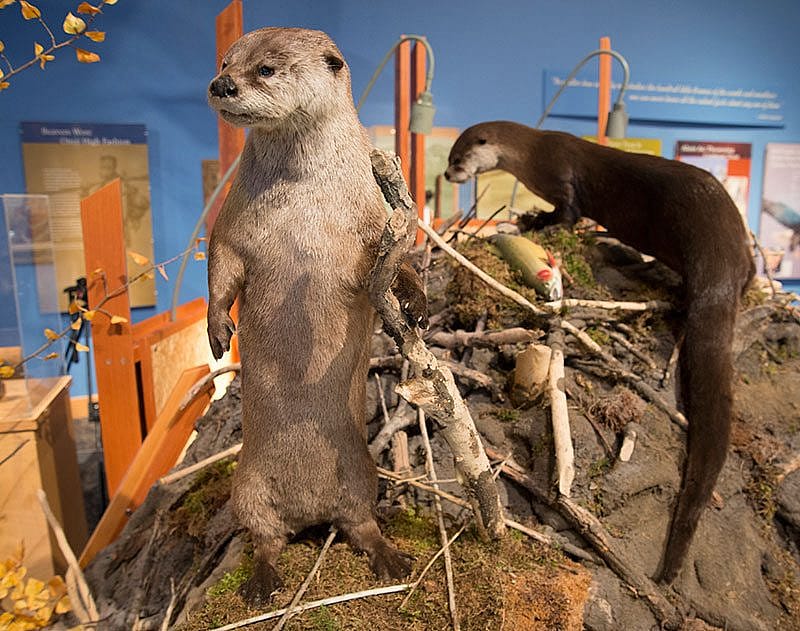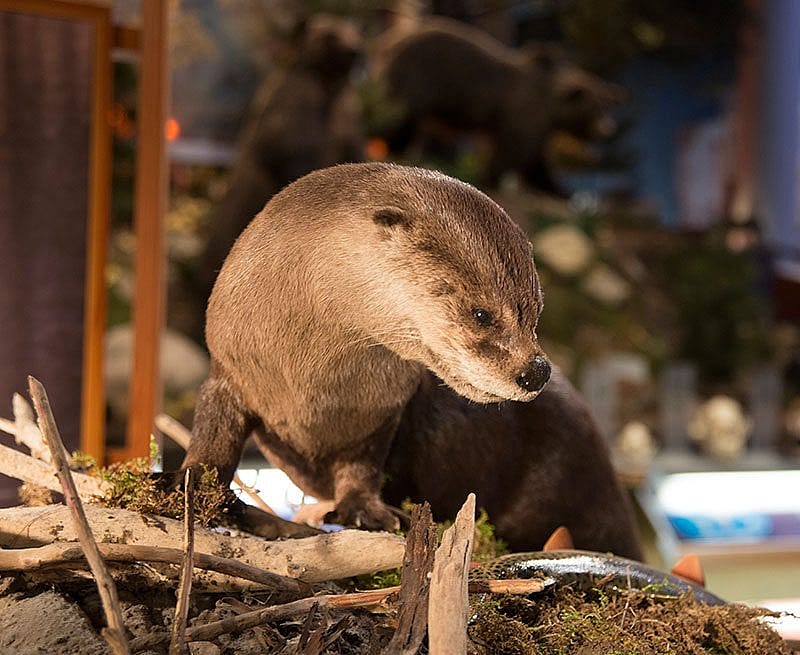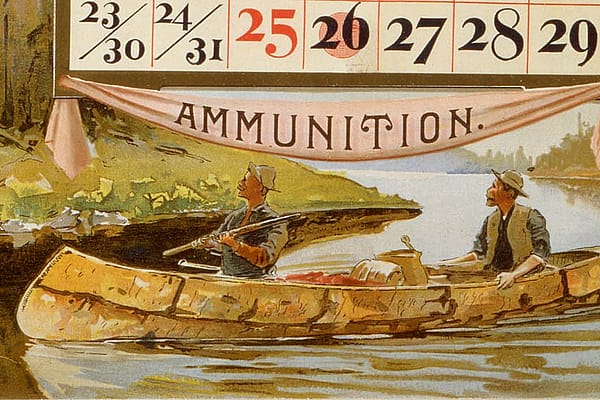
Treasures from Our West: River Otters
Originally featured in Points West in Spring 2015
North American river otter (Lontra canadensis) specimens
Most of the animal specimens that inhabit the Draper Natural History Museum exhibit environments have been acquired through salvage permits or transferred from wildlife agencies when an animal dies in the wild. These two magnificent North American River Otter specimens, recently added to the Draper’s Mountain Meadow Environment, were transferred to us by the Wyoming Game and Fish Department. A licensed beaver trapper accidentally trapped the otters and turned them in to the Department.
River otters were once common along waterways through much of North America, including the Greater Yellowstone region. Their range has significantly declined in some areas of the continent, however, due to habitat loss and pollution. Adults can weigh up to 30 pounds! Though otters spend most of their time in water, they can move about very well on land and are often seen crossing roadways as they move from one body of water to another. They are predators and members of the weasel family. They kill and eat a variety of mostly aquatic species, including fish, frogs, turtles, crayfish, and occasionally birds and other mammals.
River otters are well-known for their playful habits, and are frequently observed wrestling with one another and using well-worn mud and snow paths to playfully slide into a river or pond. River otters are often active during the middle of the day, especially during winter. One of the best places to see river otters in the Greater Yellowstone region is the snowy, icy bank of Yellowstone National Park’s Upper Falls during mid-winter.
North American River Otter specimens (Lontra canadensis). DRA305.219 and DRA305.229
Post 020
Written By
Nancy McClure
Nancy now does Grants & Foundations Relations for the Center of the West's Development Department, but was formerly the Content Producer for the Center's Public Relations Department, where her work included writing and updating website content, publicizing events, copy editing, working with images, and producing the e-newsletter Western Wire. Her current job is seeking and applying for funding from government grants and private foundations. In her spare time, Nancy enjoys photography, reading, flower gardening, and playing the flute.











